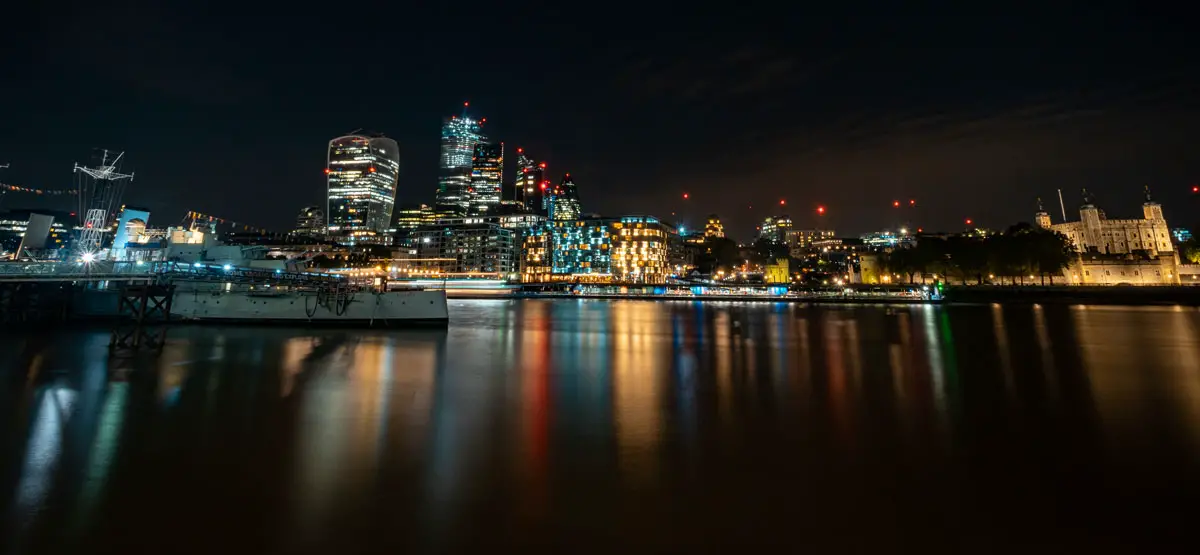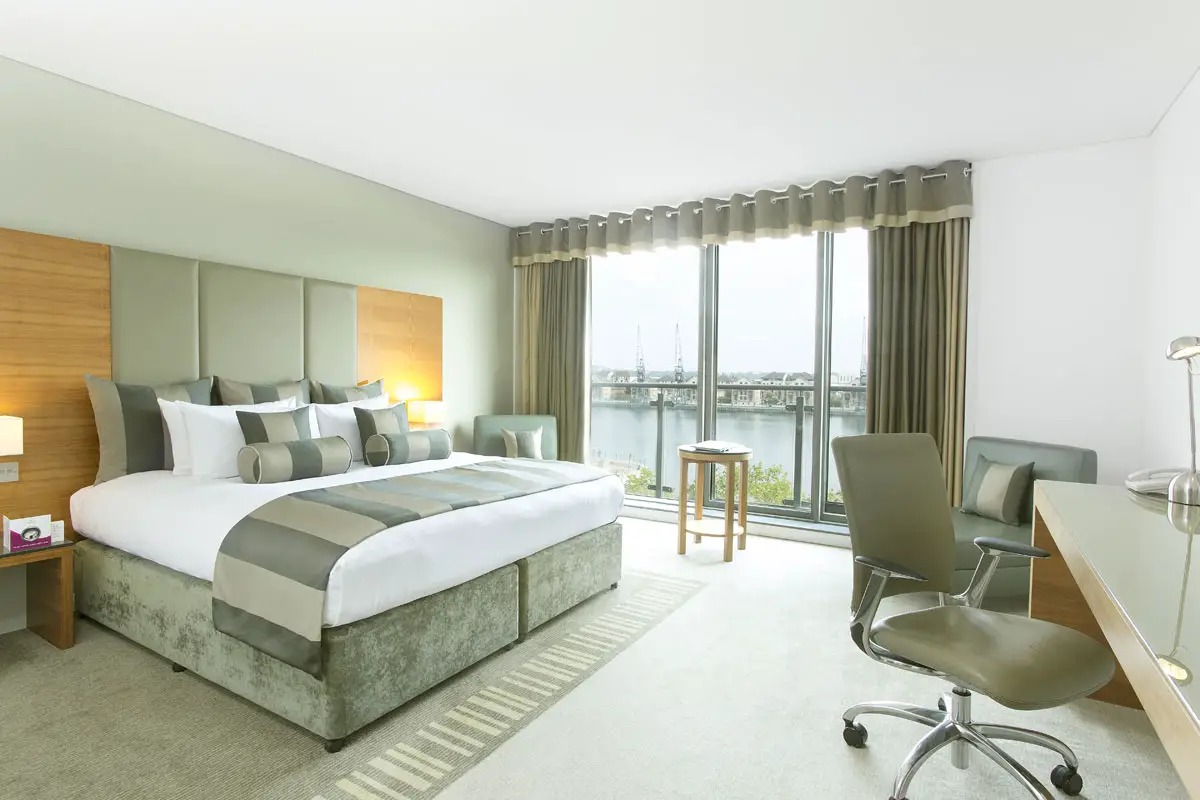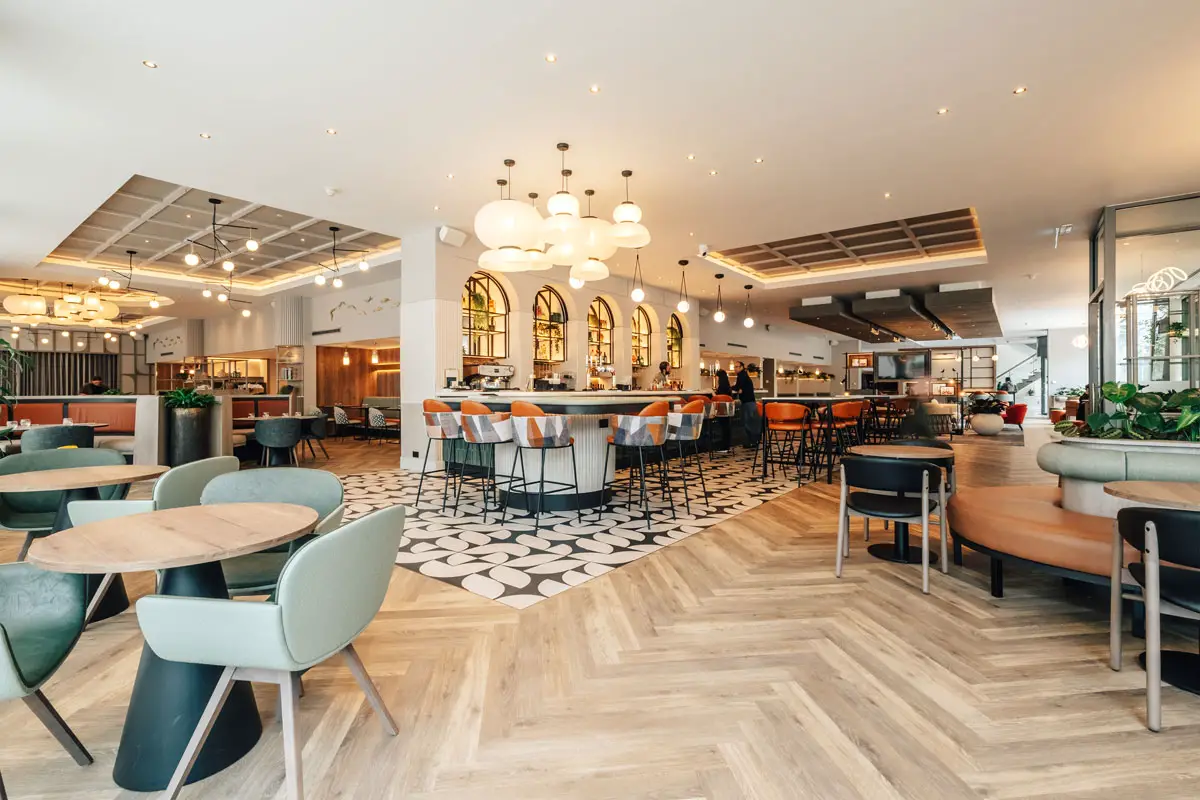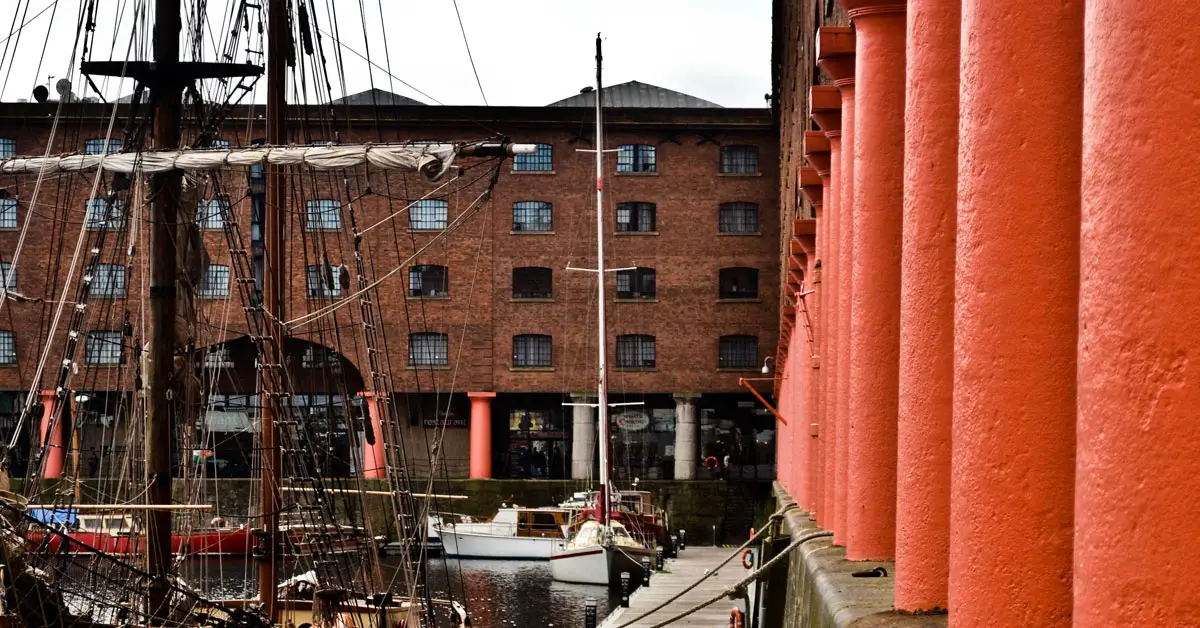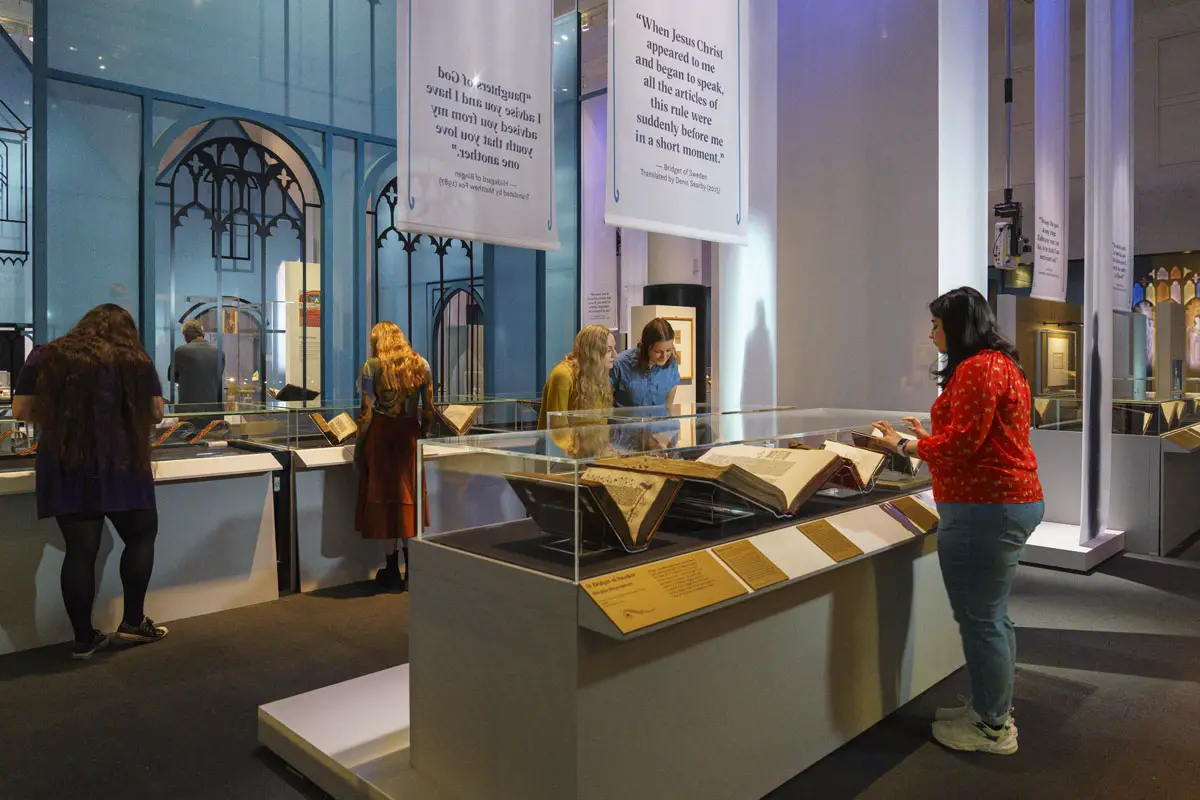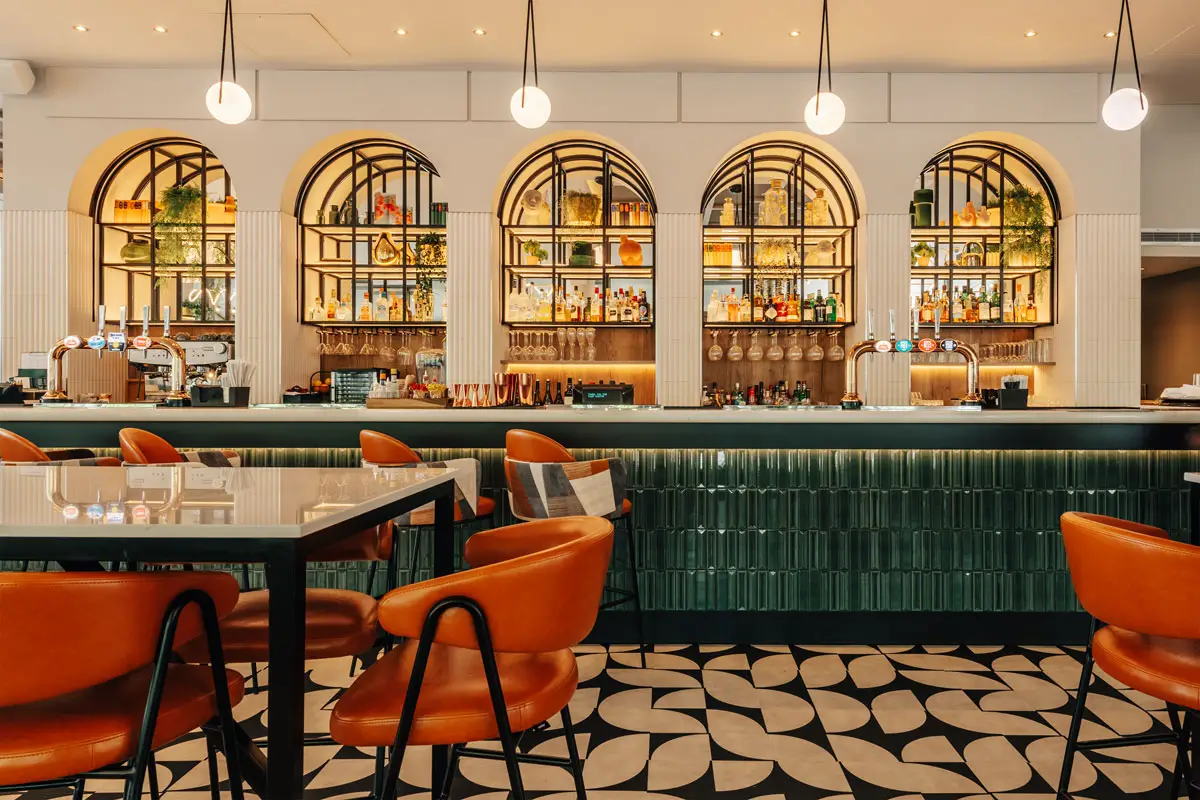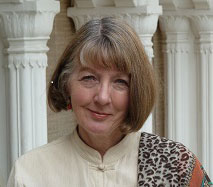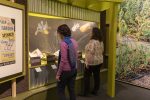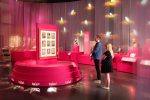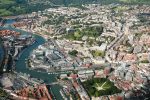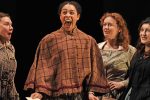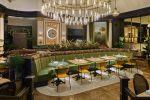London Docklands and Crowne Plaza Hotel – Review

By Clare Jenkins, December 2024
Charles Dickens found London’s Docklands fascinating. He knew the area well, with its hustle and bustle of ships unloading their exotic cargoes of silk, spices, rum, tobacco, coffee from South America, tea from India… His godfather, after all, was a sail-maker and ship’s chandler, and Dickens often visited him at his Limehouse home.
Later, in The Mystery of Edwin Drood, he wrote of how Edwin’s uncle John Jasper travels ‘eastward through the stale streets… until he reaches his destination, a miserable court, specially miserable among many such’. That destination was an opium den – which Dickens himself visited for research shortly before his death in 1870.
He also described the oysters, ‘the slimiest of shellfish, which seem to have been scraped off the copper bottoms of ships’, ‘the eating houses, the public houses, the slop shops [selling cheap clothing], the coffee shops, the tally shops [for things bought on the never-never], all kinds of shops mentionable and unmentionable’. Then there were the drunken sailors, the women of easy virtue, the Lascars, pawnbrokers, apothecaries and undertakers who ‘will bury you for next to nothing, after the Malay or Chinaman has stabbed you for nothing at all’.
“Glitzy glass skyscrapers”
He wouldn’t recognise the area now, though Batman might. The run-down warehouses and derelict terraces have largely been replaced by a whole new Gotham City. Travelling there by the Elizabeth Line and Docklands Light Railway from Kings Cross station reveals a bewildering landscape of glitzy glass skyscrapers and luxury apartment blocks, demolishing or dwarfing older buildings that got in their way. Instead of tattooed sailors, you’re more likely to find well-paid IT professionals indulging in water sports and sampling the waterfront bars and restaurants.
Getting off the DLR at Royal Victoria station, I ask a man for directions to the Crowne Plaza Docklands hotel. Turns out he’s a businessman from Northallerton who’s also staying there: “It’s a very nice place to stay, if you don’t mind being out of the city centre,” he tells me. “I come here regularly, and I like the idea that it’s where the old docklands used to be.”
A brisk two-minute walk brings us to the L-shaped, red-trimmed hotel, which – in addition to 210 bedrooms – houses a gym, spa and street-level, glass-fronted swimming-pool. While many standard rooms look inwards, my executive room looks out towards the Royal Victoria Dock, created out of marshland in the 19th Century.
“View is mesmerising”
The room, like the rest of the hotel, is sleekly, stylishly furnished, with clean lines and calmly neutral décor. And the view is mesmerising: red, blue and silver lights gleaming in the Canary Wharf tower blocks, planes coming in to land at London City Airport, red Routemaster buses trundling over the bridges, the cable car, with its other-worldly purple lighting, gliding over the Thames towards the O2 arena housed in the former Millennium Dome.
At street level, diners are eating at a Lebanese restaurant underneath an apartment block that offers a host of Rear Window visions of everyday life. It’s all I can do to tear myself away from glimpses of couples chatting on their sofas or singletons preparing their evening meal.
But I have a dinner date with friends in the Fremantle Restaurant (so-called to celebrate the area’s affiliations with Australia). First, we sample cocktails from the East London Liquor Co in the elegant, golden-lit bar. The Eastern Gin Cooler, served in a circular glass big enough to see the future in, is wonderfully refreshing, while my friend’s rum-based Berry Mojito is “lovely and fruity”.
“Helpful and friendly”
In the restaurant – all parquet flooring and light Scandi-style seating – our fellow diners include a love-struck young couple, a father and daughter here for the Formula 1 event, single men finding company in their phones, and a dozen colleagues, enjoying their post-work meal together.
We pass on the starters – though I’m tempted by the sharing mezze platter of olives, feta, stuffed vine leaves, flat bread and chorizo. There’s a good vegetarian selection encompassing tagliatelle, noodles, and miso and lemon aubergine, but I order the halloumi burger with a generous wadge of cheese, roasted peppers, avocado, sweet potato and fries (£17).
My friends kindly ignore the grilled octopus on my behalf, choosing instead lamb loin on a bed of cabbage, buckwheat, carrot and chickpea puree (£24) (“really delicious” is the verdict), and spiced salmon with sesame miso, mango, cauliflower fried rice and mangetout (£18.50) (“excellent”). Throughout – as in the rest of the hotel – the service is efficient, helpful and friendly.
The next morning, after an excellent breakfast and more Hitchcockian views (a young woman making breakfast, another hanging Christmas decorations), I stroll around the immediate area, passing people jogging, walking their dogs and hurrying for trains. The Elizabeth Line then transports me from the ExCel Centre (London’s only international conference centre) back to West India Quay and the London Museum Docklands.
“Futuristic”
The museum, housed in an atmospheric old shipping warehouse, is full of character, with beamed galleries tracing the various layers of history of the area over two centuries. They cover ship building and repairs, docking and mooring, and the docks’ role in the slave trade. London, after all, was one of the world’s most significant slave-trading ports.
A particularly engrossing section is Sailortown, the recreation of a Wapping street that was infamous for drinking, vice and crime. Winding through the narrow alley, you walk past pubs and shops including a pawnbroker’s and an animal emporium, where monkeys and other exotic ‘pets’ were for sale (or stuffed).
Other galleries trace the role of the docks during the Second World War, their decline in the 1970s and 80s and their subsequent regeneration 30-odd years ago into a futuristic cluster of global media businesses and financial services.
“Absorbing”
Back at Kings Cross, it’s a short walk to the British Library and its two current exhibitions. One – A Silk Road Oasis: Life in Ancient Dunhuang – neatly complements the magnificent Silk Roads exhibition at the British Museum. The other is the absorbing Medieval Women: In Their Own Words. And what words they are! There’s a letter dictated – and signed – by Joan of Arc; the oldest surviving Valentine’s Day letter; more love letters, this time between the Parisian monk Abelard and the abbess Heloise; the only surviving copy of the earliest known autobiography in English, The Book of Margery Kempe (discovered in the 1930s by someone looking for ping-pong balls in their country house); a musical work by the 12th Century visionary and nun, Hildegard of Bingen.
The exhibition reveals just how wide-ranging a contribution medieval women made to society: not just queens like Edward II’s wife Isabella of France and Henry VI’s wife Margaret of Anjou (represented by the largest hoard of medieval gold coins ever discovered in Britain, believed to be part of her Wars of the Roses fundraising efforts), but also more ‘ordinary’ women.
There are items relating to women’s roles as farmers, moneylenders, silk workers, troubadours, artists and printers: one 14th Century Parisian printer and bookseller was responsible for the beautifully illustrated Marco Polo’saccount of his travels in Asia and Africa displayed here. Medieval women were also healers, midwives, even surgeons. I particularly liked the idea of Ludwine of Schiedan, a Christian mystic and the patron saint of ‘chronic pain and ice skating’.
“Great transport links”
A visiting school group, meanwhile, found the section on sex and sexuality particularly gripping. And who wouldn’t, given the information about virginity- and witch-testing; about sex workers (including the trans-woman Eleanor, aka John, Rykener) and brothels; about contraception and Church rules that forbade sex between married couples on high days, holy days and all sorts of other days, leaving them with just 93 days a year to play with.
Thanks to great transport links, you can stay at the Crowne Plaza, explore some of the many things the Docklands area has to offer, then be back in the heart of the city very quickly. Time-travelling seamlessly from Gotham City back through Dickensian days, along the Silk Road to the world of the Crusades: they were the best of times, they were the worst of times…
Rooms at the Crowne Plaza hotel start at £179 B&B. Crowne Plaza London Docklands, Royal Victoria Dock, Western Gateway E16 1AL, tel: 0207-0552000, www.cpdocklands.co.uk
The exhibition A Silk Road Oasis: Life in Ancient Dunhuang is at the British Library in Euston Road, NW1 2DB, until 25th February 2025. Medieval Women: In Their Own Words is at the British Library until 2nd March 2025.
Silk Roads is at the British Museum in Great Russell Street, WC1B 3DG, until 23rd February.
